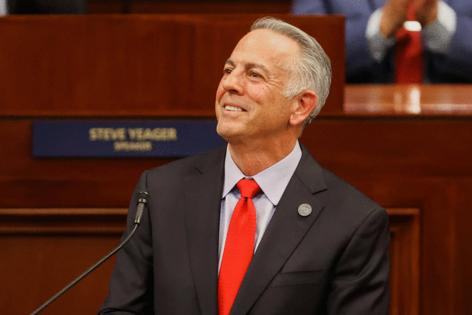Trees, water, shade: Nev. Gov. Joe Lombardo OKs extreme-heat bill after 2023 veto
Published in News & Features
Nevada’s biggest cities and counties must now incorporate protective heat measures into urban planning because of a newly signed law.
In a win for environmental groups, Gov. Joe Lombardo, a Republican, signed Assembly Bill 96 following the veto of a similar bill in the 2023 legislative session. At the time, he suggested there was a lack of evidence of development leading to higher temperatures, and he raised concerns about how such a bill could raise costs for local governments.
“Extreme heat is dangerous for the health and well-being of our community members, and we have to do everything in our power to keep each other safe,” said Jackie Spicer, coordinator of the Nevada Environmental Justice Coalition that lobbied in support of the bill. “This new law is a step in the right direction to keep Nevada home for all of us in the long term.”
Now, any municipal government with a population of more than 100,000 must amend its master plan to consider how it will protect residents and visitors from extreme temperatures, whether that’s better shade at bus stops, robust tree cover, more public drinking fountains or improved access to buildings that can act as cooling centers. The law will take effect in July 2026.
The affected city governments of Southern Nevada — Las Vegas, Henderson and North Las Vegas — didn’t immediately respond to a request for comment on Thursday.
Elizabeth Ray, a spokeswoman for Lombardo’s office, said in a statement that the governor was supportive of the changes to the bill that clarified language about what is specifically required as components of heat mitigation plans.
The final version of the bill lists “access to public cooling spaces, public drinking water, cool building practices, shade over paved surfaces and other mitigation measures to address heat in the community.”
“Given the widespread local and statewide support for AB96 following two amendments, Governor Lombardo was able to support the updated legislation and its efforts to secure cool, sustainable places in Nevada communities,” she said.
A Clark County spokesperson said in a statement that its officials already have identified ways to address heat in its master plans through its All-In Sustainability program, and they will work to ensure they align with the new law.
The bill applies to Washoe County and the cities of Reno and Sparks, as well.
Las Vegas ready to adapt
Nevada is ground zero when it comes to urban heat, with 527 heat-related deaths last year in Southern Nevada, according to the county coroner. Reno and Las Vegas consistently rank as the two fastest-warming cities when climate scientists analyze average temperatures since 1970, leading many to suggest that adaptation in urban planning is necessary.
The city of Las Vegas supported the bill in legislative hearings, with planners admitting that Nevada is only slowly catching up to its neighbor states, such as Arizona, when it comes to heat mitigation efforts.
Tree canopy, one of the strongest tools to keep people cool in the summer, is an equity issue in Las Vegas. Areas with a higher rate of low-income and minority residents like the Historic Westside and East Las Vegas have far fewer trees than more affluent neighborhoods like Summerlin, creating what’s known as urban heat islands that trap heat and worsen its effects.
“Those are things we haven’t approached in Southern Nevada yet,” said Marco Velotta, the city’s chief sustainability officer, at a hearing in February. “Having this specific element in place might help us push toward other mitigation strategies that will help our constituents.”
_____
(Marco Velotta is the son of Review-Journal reporter Rick Velotta.)
______
©2025 Las Vegas Review-Journal. Visit reviewjournal.com.. Distributed by Tribune Content Agency, LLC.







Comments